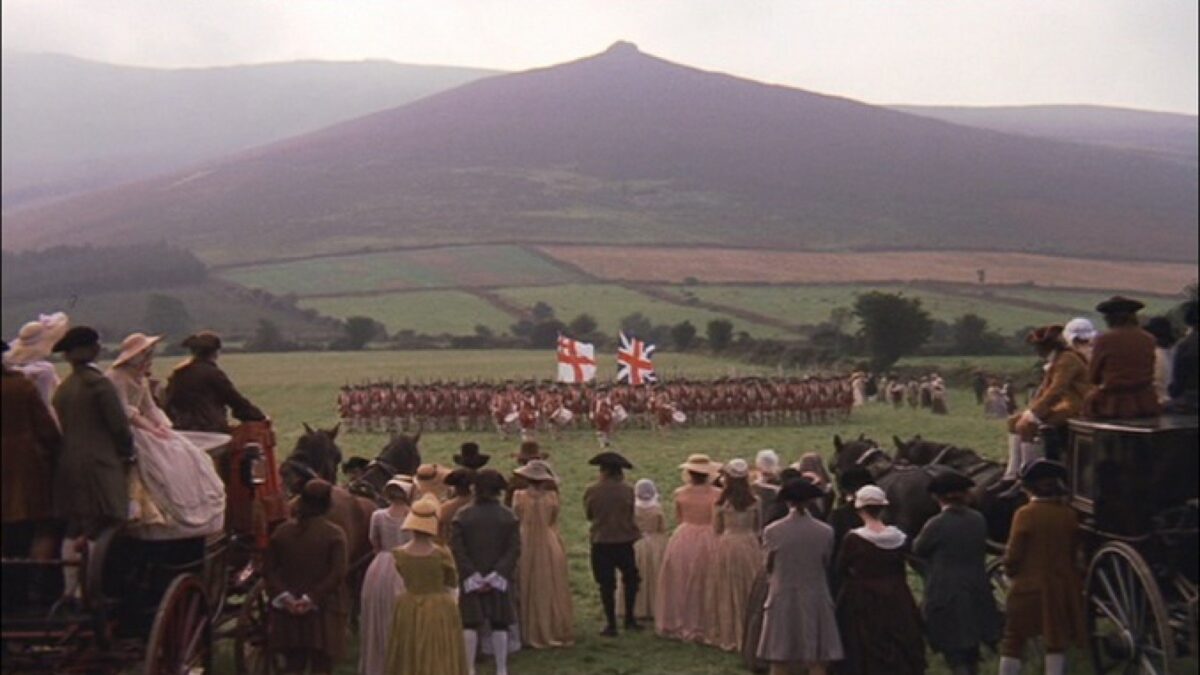
It’s amazing Barry Lyndon exists, and we can watch it over and over again.
There’s just something that keeps us coming back to Stanley Kubrick. His touch and care with the camera draw us in over and over again. One movie that sneaks up on you and beckons to be watched multiple times is Barry Lyndon.
Barry Lyndon is Stanley Kubrick’s 1975 magnum opus and is often heralded as a cinematic masterpiece. Its intricate blend of natural and artificial lighting techniques, coupled with painstaking attention to detail, brings the 18th-century world to life with a degree of authenticity seldom seen in period dramas.
Today, we’re going to examine how Kubrick harnessed natural light and innovative cinematographic techniques to make this movie pop. Yes, we will talk about the famous NASA lenses, candlelight, and the challenging outdoor, daylight cinematography that eschewed electric light.
Let’s dove in.
The Genius Behind Barry Lyndon
There’s really nothing I can write here to bolster the name of Stanley Kubrick. He has a name synonymous with cinematic brilliance. The thing I most respect about him is that he never stopped challenging himself. With Barry Lyndon, Kubrick created the film’s unique aesthetic appeal is a testament to the meticulous planning and innovative techniques employed by Kubrick and his seasoned cinematographer, John Alcott.
This is a movie whose cinematography and story are so tightly intertwined it’s wondrous.
The Landscape: Filming in England and Ireland
Locations can bring a sense of realism and scope to your storytelling. Kubrick’s choice of filming locations played a crucial role in Barry Lyndon.
The crew filmed on location across England, Ireland, and certain parts of Europe over a span of eight months. The diverse landscapes and unpredictable weather posed challenges but also added a natural charm to the film. The changeable weather often resulted in abrupt shifts in lighting within a single scene, adding an unscripted naturalism to the film.
Harnessing Natural Light: A Kubrick Special
Kubrick’s insistence on utilizing natural light was a defining aspect of Barry Lyndon. Despite the limitations it imposed on the film’s aesthetics, the results were breathtaking. Kubrick and Alcott’s ability to adapt to the whims of nature is evident in the film’s outdoor scenes, where the changing light conditions create a unique atmosphere that enhances the narrative.
Alcott’s go-to lighting source in a pinch was a Lowel 1,000-watt light that bounced through umbrellas or the ceiling. He mostly stuck to ARRI cameras and Zeiss lenses, and, on all of Kubrick’s films, he always had an Angenieux zoom on hand.
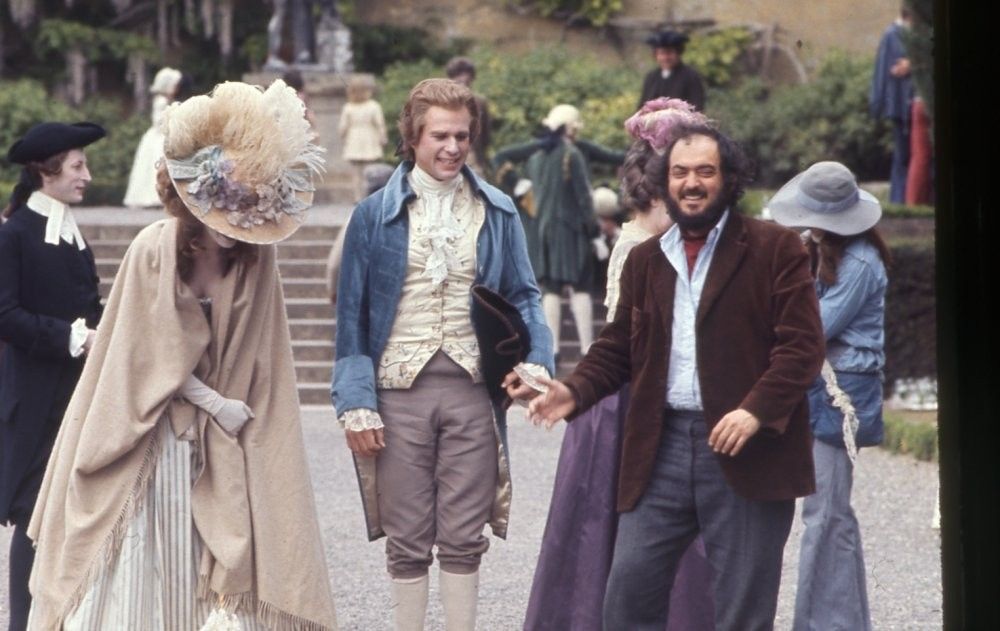
What Was Barry Lyndon Shot On?
The movie was shot on film using the Arriflex 35BL Camera, the Mitchell BNC Camera, the Canon K35 Prime Lenses, the Carl Zeiss Planar 50 mm f0.7 Lens (Modified by Ed DiGiulio), the Carl Zeiss Planar 50 mm with Kollmorgen Adaptor 36.5 mm f0.7 (Modified by Ed DiGiulio), the Cinema Products Cine-Pro 24-480 mm T9 Zoom Lens, and Cooke Varotal 20-100 mm T3.1 Zoom Lens.
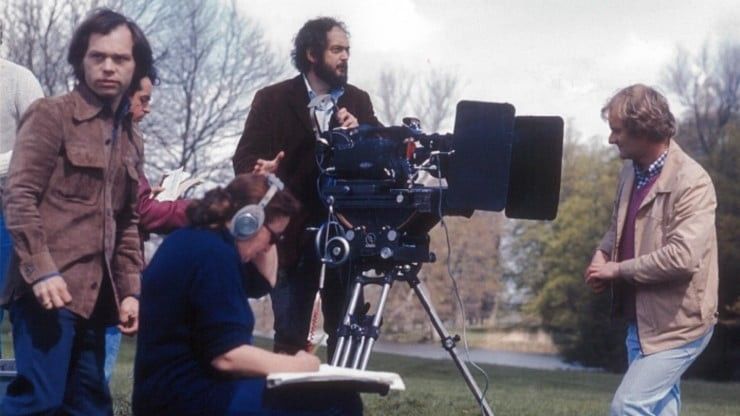
The Zeiss f0.7 50 mm Lens
As the legend goes, Kubrick needed a lens that would capture the lowest light possible. So he reached out to NASA to see what they were using.
The acquisition of NASA’s Zeiss f0.7 50 mm lens was a turning point for Barry Lyndon.
This extremely fast lens, originally developed for photographing the dark side of the moon, allowed Kubrick to film scenes lit solely by candlelight. This lens’s unique features required significant modification to fit Kubrick’s Mitchell BNC camera, marking a significant innovation in filmmaking technology.
Jan Harlan, an executive producer who worked alongside the late Stanley Kubrick, told this story of the lens:
“Stanley read an article in the ‘American Cinematographer’ reporting about a ZEISS 0.7/50 mm lens and got most excited. He asked me to research this. I called ZEISS and spoke to a Dr. Kämmerer, who explained that this lens could not be used on a motion picture camera since the rear element is only a little more than 5 mm from the film-plane. I told this to Stanley, and, typical for him, he was not ready to take a ‘no’ for an answer and investigated whether there is a camera with this clearance of 5 mm. A reflex camera is clearly not possible since there is no room for a reflecting mirror, but 5 mm should still be enough room to allow a rotating disk. To make a long story short: I bought one lens and took it to Ed Di Giulio after Stanley had long talks with him. Ed re-worked the receiving mount of a Mitchel BNC and made it purely dedicated to this lens. After the test were successful, I bought two further lenses for potential conversion to other focal lengths. All are installed now in the Stanley Kubrick Exhibition except the one which I held back.”
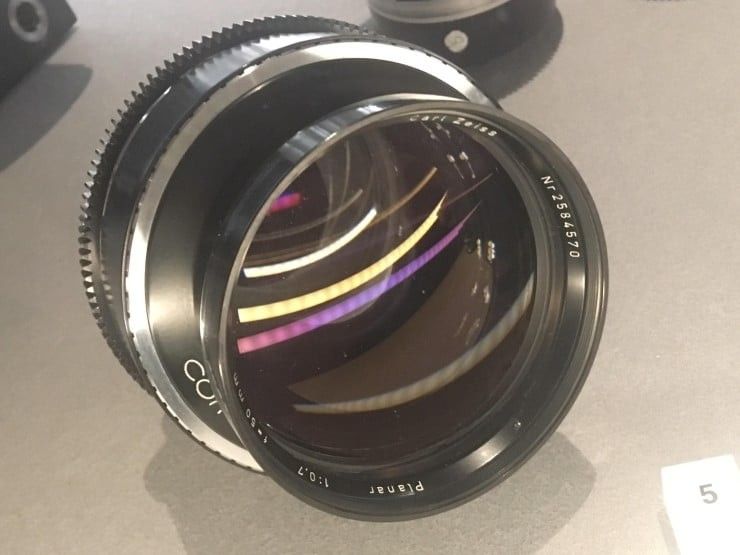
The Art of Candlelight Cinematography
Shooting scenes in candlelight was a challenging feat, considering the vast interiors of the stately homes utilized in the film. However, Kubrick’s determination and innovative spirit led to the creation of some of the most memorable scenes in Barry Lyndon.
The candle-lit scenes shot using the modified Zeiss lens, lend an authentic feel to the film, transporting the audience to the heart of the 18th century. They make every frame feel like a painting and invite you into a time period that’s as much worldbuilding as it is cinematography.
While natural light played a significant role in Barry Lyndon, it was not the sole lighting source. Many of the film’s scenes required conventional lenses and lighting techniques, particularly during the film’s second part.
Consequently, a delicate balance between natural and artificial light was maintained throughout the film, resulting in a visual spectacle that is both contemporary and authentic.
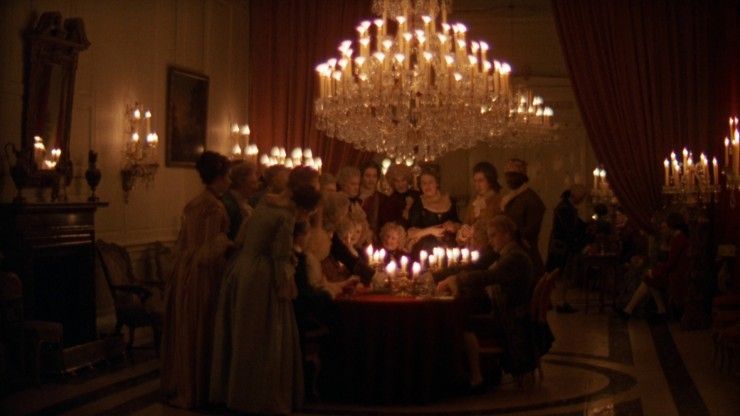
The Slow Zoom-Out: A Kubrick Signature
Another noteworthy aspect of Barry Lyndon is the frequent use of the slow zoom-out, achieved using an Angeniux 10-to-1 zoom lens on an Arriflex 35BL. This technique serves both a practical and symbolic purpose, allowing the audience to focus on specific elements before revealing the entire scene and emphasizing the insignificance of individual actions in the grand scheme of life.
It also became a defining metaphor for the story of the movie. Will this one personal journey amount to anything in the scope of a world like this, does it even matter?
Summing Up Stanley Kubrick’s Barry Lyndon And The Art of Filming in Natural Light
When I watch a Kubrick movie, I always feel challenged to dig into it more. So that’s probably what I’ll be doing for the rest of the week. Barry Lyndon is a testament to Stanley Kubrick’s genius and his ability to push the boundaries of conventional filmmaking.
The film’s unique blending of natural and artificial light, its meticulous attention to detail, and its innovative use of technology have cemented its place as a masterpiece in cinematographic history. Its impact continues to resonate with filmmakers and audiences alike, underscoring the enduring legacy of Stanley Kubrick’s most visually striking film.
Take any lessons you got from this and go make something great.














